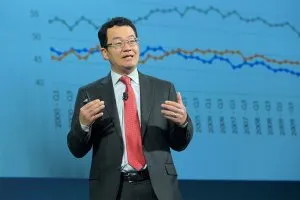Commercial real estate investments trends have been positive in 2015, as global economic volatility has driven investors to the relative safety and performance of U.S. assets. Sales of large CRE transactions (LCRE)—over $2.5M—advanced 36 percent year-over-year in the first half of 2015, totaling $255 billion, based on Real Capital Analytics (RCA) data. Prices in LCRE markets rose by 3.1 percent during the second quarter of this year, based on RCA’s Commercial Property Price Index.
In comparison to the high-end deals, 86 percent of commercial REALTORS® handle transactions below the $2.5 million threshold. Although many REALTORS® participate in transactions above $2.5 million per deal, they serve a segment of the commercial real estate market for which data are generally not as widely reported, which we term the small CRE transactions (SCRE).
Based on National Association of REALTORS® (NAR) data for the SCRE market, sales volume in the first half of the year advanced 11 percent year-over-year. With the shortage of available inventory reported as the number one concern for NAR members, price growth accelerated in SCRE markets during the second quarter of 2015, with properties trading at 6.6 percent higher average prices compared with the same period in 2014. The average transaction price increased from $1.7 million in the first quarter 2015 to $2.0 million in the second quarter 2015.
With rising transactions and asset valuations, capital availability has broadened. According to the REALTORS®Commercial Lending Trends 2015 report, major capital providers found new energy in revitalized commercial markets and competed for deals. In LCRE markets, national banks accounted for the bulk of capital providers, riding the wave of low interest rates and offering low cost floating rate lending. Government-sponsored enterprises (GSEs) were the second largest debt originator, dominating the financing in the multi-family segment. CMBS conduits and life insurance companies also increased their originations.
Based on NAR’s data, the capital picture displays a fundamentally different landscape. Local and community banks were the largest lending groups in REALTORS® commercial markets in 2014, accounting for 32 percent of transactions. Private investors and national banks accounted for the third and fourth largest funding sources.

The Small Business Administration (SBA) comprised six percent of funding for REALTORS® real estate transactions. SBA provided $26.6 billion in loans during 2015, a 19 percent increase from 2014. The bulk of SBA lending was in the form of a General Small Business Loan, also known as a 7(a) loan, which comprised 85 percent of total. The Real Estate & Equipment Loan—CDC/504—accounted for the rest.

REALTORS® indicated in a separate survey that they used SBA loans in the course of business activity. In keeping with the trend, the most popular SBA loan product used by REALTORS® was the SBA 7(a) loan, used by 48 percent of NAR members. The second most popular loan type was the Real Estate & Equipment Loan CDC/504, accessed by 31 percent of respondents. Disaster loans and those offered under SBA’s Microloan Program were the remaining lending facilities employed. The average SBA loan amount was $422,310.

While only 12 percent of REALTORS® indicated that they contacted the SBA for resources other than loans, most did so for advice on working with the SBA and training. Members also sought small business mentoring and information about other federal or state programs.
To access the Commercial Lending Trends, visit http://www.realtor.org/reports/commercial-lending-trends-survey.








